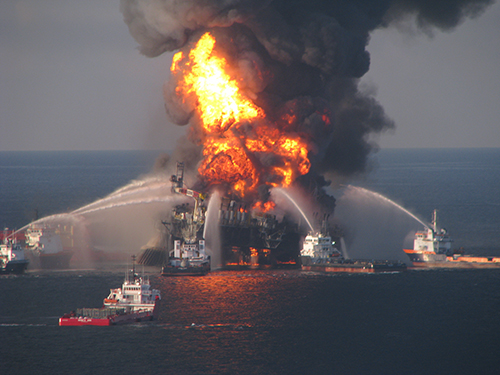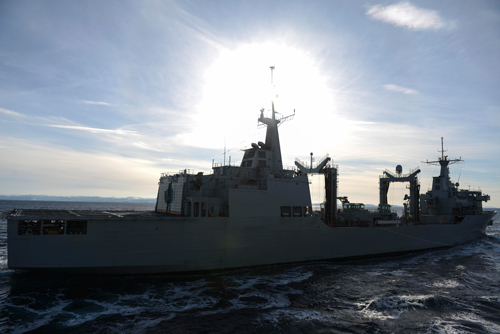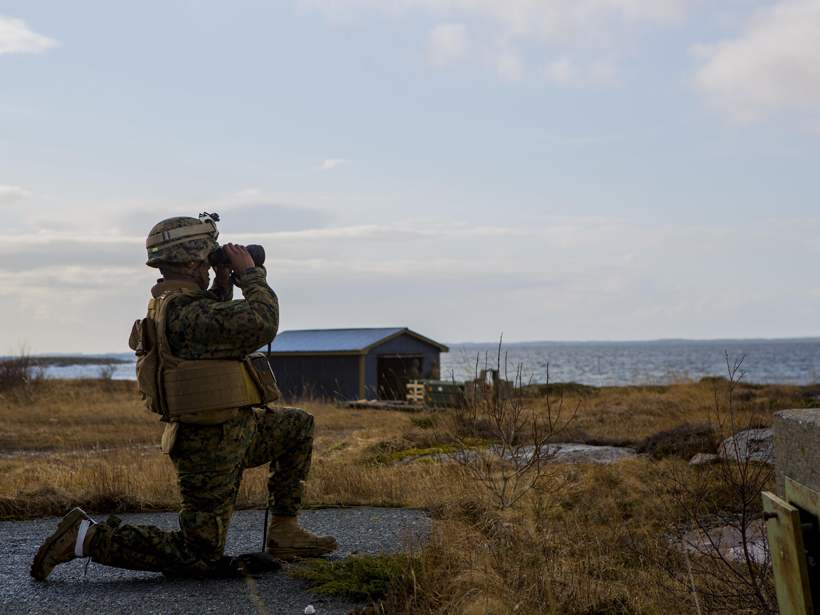Sailors use the old expression “All hands on deck!” to signal a ship’s crew to meet, receive orders, and prepare for action. Usually, a ship’s leadership uses this term only in times of crisis or stress because it involves every person not actively operating the ship. It is used when the ship’s commanding officer requires the entire crew’s knowledge, skill, and expertise.
However, instances can arise in which the collective experience of an entire ship lacks critical knowledge required for an operation. This situation requires looking beyond the traditional peer group to seek and give help.
If the military and academic communities look beyond their cloisters, many opportunities for shared fieldwork arise that could jointly help society.
We were involved with such a collaboration involving two cultures that can have a tenuous relationship: academia and the military. The interaction provided a valuable reminder that when they share a common purpose—in this case, protecting people and the environment from an oil spill—academics and military personnel can join forces.
Although academia and the military collaborate in some areas, the two communities leave work in the field, or, in military parlance, during “operations,” as a military- or academia-only endeavor. However, if the two communities look beyond their cloisters, many opportunities for shared fieldwork arise that could jointly help society.
An Exchange of Business Cards
On 20 April 2010 in the northern Gulf of Mexico, the oil drilling platform Deepwater Horizon exploded and killed 11 people. The damaged Macondo well released an estimated 160 million gallons of oil into the ocean over 87 days, polluting the water, seafloor, sea surface, atmosphere, and coastal lands. The pervasive oil pollution threatened tourism and seafood industries as well as the ecology of the affected region.

During the Deepwater Horizon oil spill, Thad Allen, the former U.S. Coast Guard admiral and commandant who led the response to the disaster, often lamented that critical participants too frequently met for the first time at the onset of a crisis, as opposed to having met and interacted during advanced planning exercises. Admiral Allen frequently and famously stated, “You don’t exchange business cards during a crisis.”
As with so many aspects of life, different communities have different cultures with unique jargon, definitions of success, and experiences. Simply, it is better to exchange contact and information across these cultural boundaries in advance, when timing is not critical.
Two of us (Christopher Reddy and David Valentine) found ourselves in the thick of the Deepwater Horizon disaster because of our prior experiences studying the biogeochemistry of oil spills and natural oil seeps. We learned, through trial, to embrace Allen’s mantra.
So in February 2016, long after the Deepwater Horizon crisis was over, our arms and ears were wide open when this article’s third author, Lieutenant Commander Jason Ziebold of the U.S. Navy, asked to exchange business cards. At the time, he was part of a staff of military planners and operations managers for a large exercise in Norway. He needed information that the collective knowledge of the staff lacked.
One of the greatest challenges of Deepwater Horizon was communicating and building trust with the diversity of stakeholders involved. These stakeholders ranged from government and industry responders to the media, nongovernmental organizations, local citizens, and academic researchers with expertise in the deep waters of the Gulf of Mexico. All of them had different responsibilities, goals, time frames, and cultures, and suddenly, they were thrown together under duress.
These challenges have spawned efforts such as the Science Partnerships Enabling Rapid Response (SPERR). This is an ongoing effort to understand the obstacles facing effective scientific communication across government, industry, and academia during environmental crises such as large oil spills and to design new tools, protocols, and practices to enable engagement and collaboration.
But sometimes, as in our case, it just takes a little initiative and a simple gesture.
Oil Spills: Not Always an Accident
Oil spills are usually thought to be accidental, but releases also result from deliberate actions, such as the sinking of vessels during military conflicts. For example, hundreds of vessels that were deliberately sunk during World War II are leaking oil into the Pacific Ocean or are predicted to do so in the future. Environmental effects can also be used as weapons of war as exemplified during the first Gulf War when Saddam Hussein strategically chose to create an oil spill that leaked approximately 160 million gallons of crude oil.
An increasing trend in military circles is to take environmental effects into account during planning.
Members of the military are aware that their strategic sinking of ships poses hazards long after conflicts end. An increasing trend in military circles is to take these effects, including environmental ones, into account during planning.
Cold Response 16
In 2015 and early 2016, U.S. forces were preparing a military exercise to conduct operations in cold-weather environments on land and at sea. The exercise, called Cold Response 16, placed fictional countries in the real-world geography of Norway.
An adversary country, Norlandia (northern Norway), invaded a North Atlantic Treaty Organization (NATO) ally, Highland (central Norway). NATO forces were charged with responding to the invasion and repelling Norlandian forces from Highland.
The military exercise planned to defeat the enemy while limiting unnecessary human causalities and avoiding damage to allies’ critical infrastructure, such as power plants, airports, and hospitals. But in planning for Cold Response 16, commanders and planners also considered environmental, economic, and political impacts from damage to fisheries and aquaculture from the sinking of ships designed to refuel other ships at sea. Norway has the largest fishing industry in Europe and second by value in the world. An oil spill risked creating significant environmental damage with significant impact on local economies and the potential for negative publicity.
LCDR Ziebold was charged with researching the impacts of a spill and ways to minimize negative effects to both the NATO mission and nearby populations. He and his colleagues were concerned that they could create another Deepwater Horizon disaster.
An oil spill scientist would know that such a scenario would not happen in this case because of a variety of factors. But Ziebold’s expertise is naval combat, not marine pollution science. He took the initiative of simply writing an email that eventually found its way to Reddy and Valentine.
Teaming Up to Reduce the Damage
Reddy and Valentine provided background knowledge on oil spills. They also helped to gather more information and expertise from colleagues in both U.S. government agencies and industry.

Armed with this information, the academic team briefed Cold Response 16 planners on various case studies of previous oil spills (including Deepwater Horizon), the different environmental fates and biological effects of jet fuel versus diesel fuel, and the estimated concentrations of oil that would impact the environment in Cold Response 16.
The collective knowledge base resulted in advice to avoid sinking a ship in shallow waters near land and to take advantage of offshore winds and outgoing tides that would move oil away from shore. Thus, during the exercise, NATO forces were able to fictionally “sink” a Norlandia refueling ship at a time and in an area with near-ideal conditions to prevent and mitigate environmental damage. Furthermore, the information also provided the military planners knowledge of the environmental effects should a refueling ship need to be sunk in a shallow-water area.
A Mutually Beneficial Exercise
Beyond a successful military exercise, we see this as a successful, mutually beneficially exercise in communication between the military and academic researchers. This case exemplifies the value of stakeholders taking the simple, but often overlooked, step of “exchanging business cards” in the planning stages of events, rather than during active crises, when seeking to minimize damage from oil spills.
The military seeks advice from academia; however, it rarely seeks it during an ongoing operation. Once operations begin, military members do not typically think about incorporating elements of academia into rapid, life-versus-death decision making. Likewise, academics lack built-in incentives or rewards for having a willingness to develop or create more preexisting relationships outside the ivory tower. However, collaboration between the two communities can have great rewards. Reddy and Valentine have begun to enjoy this aspect of being scientists: providing clarity, information, and expertise to policy makers and other stakeholders before, during, and following oil spills.
Such modest levels of engagement outside the ivory tower could have a greater impact than a highly cited publication.
In the wake of Deepwater Horizon, former National Oceanic and Atmospheric Administration (NOAA) administrator Jane Lubchenco stated that scientists who had preexisting relationships with federal agencies such as NOAA and the Coast Guard had the greatest success in helping to mitigate the crisis. In this case, a single email could perhaps protect untold lengths of coastline, people’s livelihoods, and the country’s relationships with allies one day.
Arguably, even such modest levels of engagement outside the ivory tower could have a greater impact than a highly cited publication.
—Christopher M. Reddy (email: [email protected]), Department of Marine Chemistry and Geochemistry, Woods Hole Oceanographic Institution, Woods Hole, Mass.; David L. Valentine, Department of Earth Science and Marine Science Institute, University of California, Santa Barbara; and Jason Ziebold, Expeditionary Strike Group TWO, U.S. Navy, Virginia Beach, Va.
Citation:
Reddy, C. M.,Valentine, D. L., and Ziebold, J. (2016), Academia and the military can be valuable partners, Eos, 97, https://doi.org/10.1029/2016EO062795. Published on 10 November 2016.
Text © 2016. The authors. CC BY-NC-ND 3.0
Except where otherwise noted, images are subject to copyright. Any reuse without express permission from the copyright owner is prohibited.

